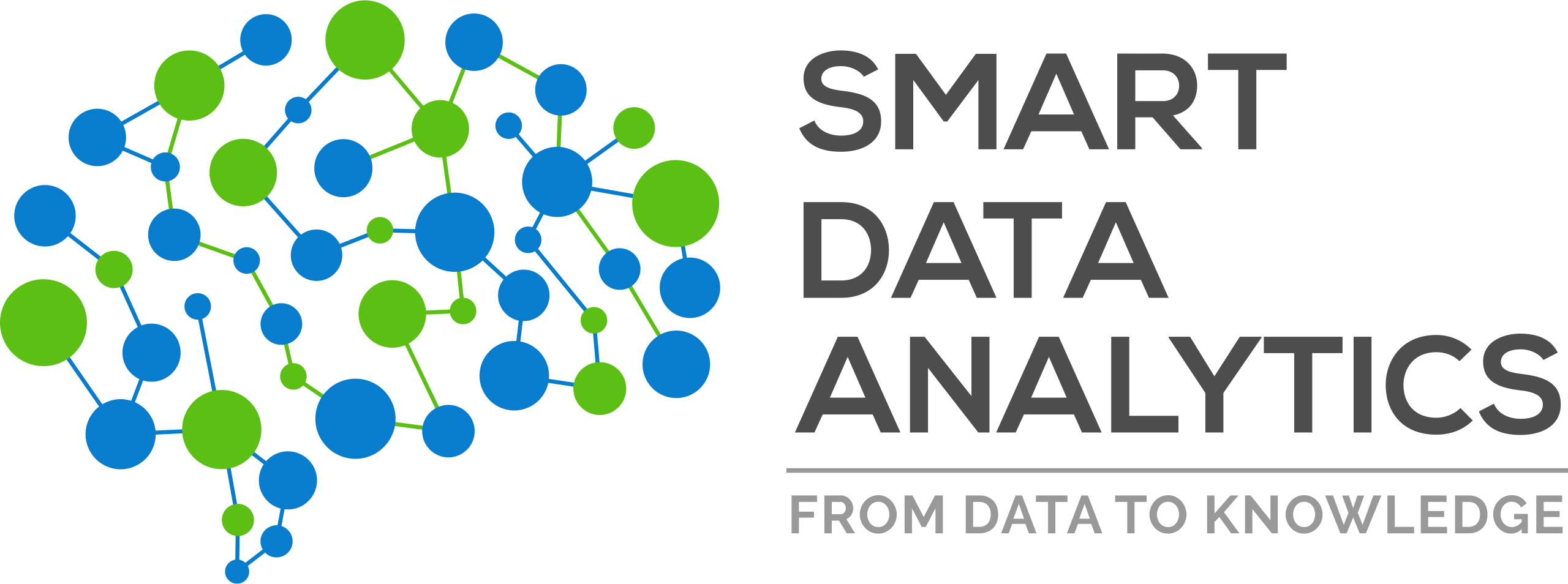We are very pleased to announce that our group got four papers accepted for presentation at ISWC2020 (International Semantic Web Conference). ISWC is the premier international forum, for the Semantic Web / Linked Data Community, and will bring together researchers, practitioners and industry specialists to discuss, advance, and shape the future of semantic technologies.
Here are the pre-print of the accepted papers with their abstract:
- Fantastic Knowledge Graph Embeddings and How to Find the Right Space for Them
By Mojtaba Nayyeri, Chengjin Xu, Sahar Vahdati, Nadezhda Vassilyeva, Emanuel Sallinger, Hamed Shariat Yazdi , and Jens Lehmann.Abstract
During the last few years, several knowledge graph embedding models have been devised in order to handle machine learning problems for knowledge graphs. Some of the models which are proven to be capable of inferring relational patterns, such as symmetry or transitivity, show lower performance in practice than expected by looking at their theoretical power. It is often unknown what factors contribute to such performance differences among KGE models in the inference of particular patterns. We develop the concept of a solution space as a factor that has a direct influence on the practical performance of knowledge graph embedding models as well as their capability to infer relational patterns. We showcase the effect of solution space on a newly proposed model dubbed SpacE^ss. We prove the theoretical characteristics of this method and evaluate it in practice against state-of-the-art models on a set of standard benchmarks such as WordNet and FreeBase. - Temporal Knowledge Graph Embedding Model based on Additive Time Series Decomposition
By Chengjin Xu, Mojtaba Nayyeri, Fouad Alkhoury, Hamed Shariat Yazdi , and Jens Lehmann.Abstract
Knowledge Graph (KG) embedding has attracted more attention in recent years. Most KG embedding models learn from time-unaware triples. However, the inclusion of temporal information besides triples would further improve the performance of a KGE model. In this regard, we propose ATiSE, a temporal KG embedding model which incorporates time information into entity/relation representations by using additive time series decomposition. Moreover, considering the temporal uncertainty during the evolution of entity/relation representations over time, we map the representations of temporal KGs into the space of multi-dimensional Gaussian distributions. The mean of each entity/relation embedding at a time step shows the current expected position, whereas its covariance (which is temporally stationary) represents its temporal uncertainty. Experimental results show that ATiSE remarkably outperforms the state-of-the-art KGE models and the existing temporal KGE models on link prediction over four temporal KGs - PNEL: Pointer Network based End-To-End Entity Linking over Knowledge Graphs
By Debayan Banerjee, Debanjan Chaudhuri, Mohnish Dubey, and Jens Lehmann.Abstract
Question Answering systems are generally modelled as a pipeline consisting of a sequence of steps. In such a pipeline, Entity Linking (EL) is often the first step. Several EL models first perform span detection and then entity disambiguation. In such models errors from the span detection phase cascade to later steps and result in a drop of overall accuracy. Moreover, lack of gold entity spans in training data is a limiting factor for span detector training. Hence the movement towards end-to-end EL models began where no separate span detection step is involved. In this work we present a novel approach to end-to-end EL by applying the popular Pointer Network model. It achieves competitive performance while maintaining low response times. We demonstrate this in our evaluation over three datasets on the Wikidata Knowledge Graph. - CASQAD: A New Dataset For Context-aware Spatial Question Answering
By Jewgeni Rose, and Jens Lehmann.Abstract
The task of factoid question answering (QA) faces new challenges when applied in scenarios with rapidly changing context information, for example on smartphones. Instead of asking who the architect of the “Holocaust Memorial” in Berlin was, the same question could be phrased as “Who was the architect of the many stelae in front of me?” presuming the user is standing in front of it. While traditional QA systems rely on static information from knowledge bases and the analysis of named entities and predicates in the input, question answering for temporal and spatial questions imposes new challenges to the underlying methods. To tackle these challenges, we present the Context-aware Spatial QA Dataset (CASQAD) with over 5,000 annotated questions containing visual and spatial references that require information about the user’s location and moving direction to compose a suitable query. These questions were collected in a large scale user study and annotated semi-automatically, with appropriate measures to ensure the quality.

